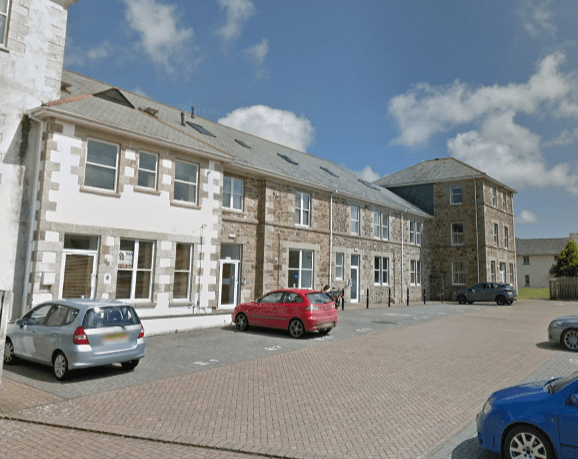In 1863 the dominant occupational group in Cornwall obtained their own hospital. The West Cornwall Hospital for Convalescent Miners was opened at Redruth on land donated by T.C.Agar-Robartes of Lanhydrock. Robartes also provided the bulk of the cash needed to pay for its upkeep. Patients were under the care not of doctors working full-time at the hospital, but the various surgeons contracted to the individual mines. These mine doctors recommended their patients for admission and were then responsible for their treatment.
Rather strangely, given the number of accidents in the mines, there was initially no accident ward, this being added in 1871. Presumably, most long-term patients were suffering mainly from the lung complaints and pneumoconiosis that shortened miners’ lives in the nineteenth century. This was brought on by the inhalation of dust and if anything became even more of a problem with the introduction of rock drills from the 1890s. Between 150 and 200 patients were admitted annually in the 1870s, this rising to over 200 in the 1880s despite the contraction of the mining industry.

Patients were subject to a barrage of rules, including that they
shall be decent and regular in their conduct, shall not use improper language, play at cards, dice or other games of chance; they shall not make use of spirituous liquors or any provisions brought by friends or visitors; they shall not chew tobacco nor smoke without leave of their medical attendant nor ever in the wards of the hospital.
In 1890 the Womens’ Hospital opened as a separate establishment on the same site, with the two being amalgamated in 1901. A maternity ward followed in 1926 and this continued until the late 1970s, when centralisation of services on Treliske picked up pace. By the mid-1990s the hospital had been run down, with the remaining services transferred to nearby Barncoose Hospital, a former workhouse infirmary. In 2002 the hospital building was converted into flats and offices and the surrounding land became the site of a housing project.

Thank goodness that during the Victorian time of ‘do gooders’ some worried about the miner’s health. I feel that there’s shame associated with mining in the sense that humans had to work in such a shocking manner.
I’d love to see any research on the names of Morshead and Symons that were South East Cornwall. Morshead tended to be farmers. I’ve little knowledge on what the Symons family did, but the ones near Saltash may have been in business. Thankyou.
LikeLike
Thanks for that Bernard, didnt know about it. Whether the miners were the ‘dominant occupational group’ is doubtful – they were the third biggest group, I believe socially they ranked (and were paid) above farm labourers but below craftsmen and small farmers. There were certainly a lot more of them than anywhere else.
LikeLike
My mum, Liz/Betty Harry was the night sister based in Gynae there for many years. So many times we waited in the car for her to come off shift or took her in of an evening. Good to read of it. Institutions that gave a focus to communities.
LikeLike
I was born at the women’s hospital.
LikeLike